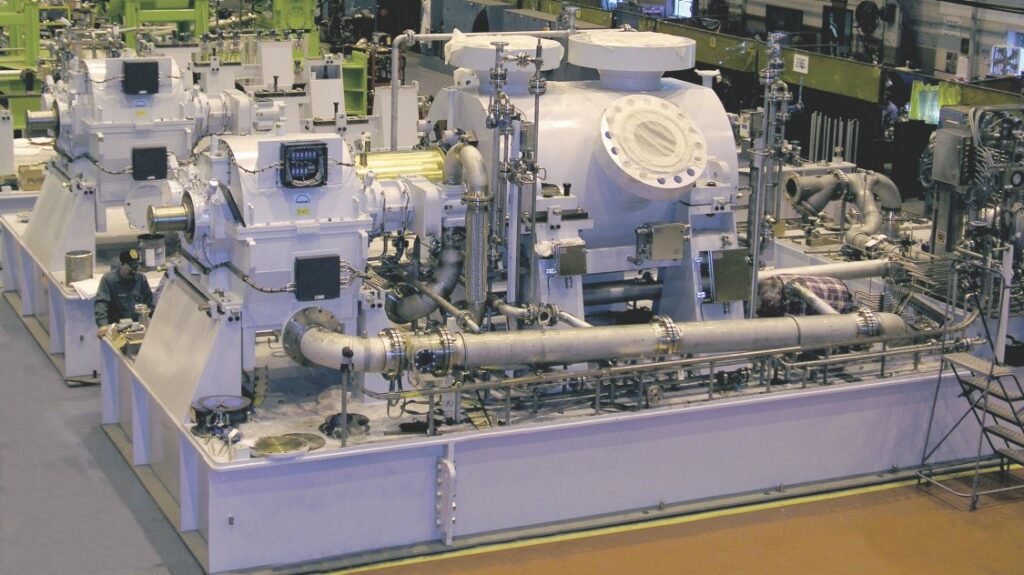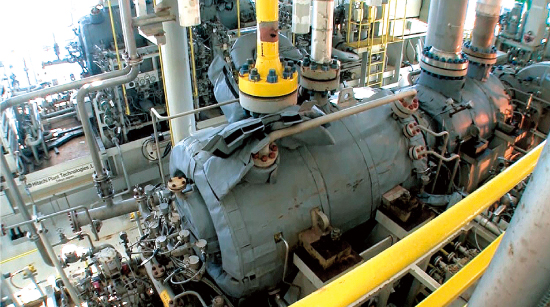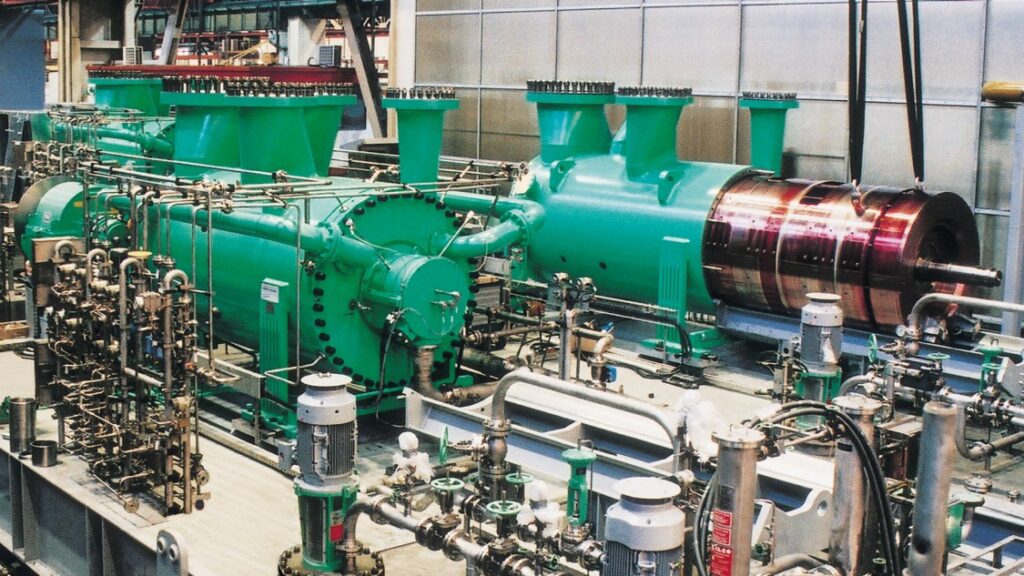FACTORS IMPACTING AVAILABILITY - CENTRIFUGAL COMPRESSORS

- Design and Operating Conditions: The design and operating conditions of the compressor can impact its availability. Compressors that are designed for high efficiency and reliability, with features such as efficient impellers and bearings, can improve availability. Operating conditions such as high temperatures, high pressures, and corrosive environments can also impact compressor availability.
Recommendations: Consider design features that improve reliability and efficiency, such as advanced impeller designs, high-quality bearings, and efficient cooling systems. Implement regular inspections and maintenance to identify and address potential issues early on. Consider upgrading or modifying compressors to better handle challenging operating conditions.
- Maintenance and Repair Practices: Proper maintenance and repair practices are critical to maintaining compressor availability. Neglecting regular maintenance can lead to unexpected downtime and costly repairs. Repair practices that are not performed correctly or efficiently can also impact availability.
Recommendations: Implement a comprehensive maintenance program that includes regular inspections, cleaning, lubrication, and component replacements. Use OEM-approved parts and materials for repairs and replacements. Provide proper training to maintenance personnel to ensure that repairs are performed correctly and efficiently.
- Spare Parts Availability: The availability of spare parts can impact compressor availability. If spare parts are not readily available, repairs may take longer than expected, resulting in extended downtime.
Recommendations: Maintain an adequate inventory of critical spare parts to minimize downtime in the event of a failure. Work with suppliers to ensure that spare parts are readily available when needed.
- Human Factors: Human factors such as operator error, inadequate training, and insufficient supervision can impact compressor availability.
Recommendations: Provide proper training to operators and maintenance personnel to ensure that they understand how to properly operate and maintain compressors. Implement procedures to ensure that operators and maintenance personnel follow best practices and are properly supervised.
- Technology: Advances in technology can impact compressor availability. New technologies such as sensors and monitoring systems can help identify potential issues before they result in downtime.
Recommendations: Consider implementing advanced technologies such as vibration sensors and condition monitoring systems to identify potential issues early on. Use data analysis and predictive maintenance techniques to optimize maintenance schedules and improve availability.
By addressing these critical factors, users and manufacturers can work together to improve the availability of centrifugal compressors in both existing and new plants.

WHY, WHEN, WHERE, WHAT, WHICH, HOW TO APPLY AVAILABILITY FACTORS IN ENGINEERING & DESIGN
To apply availability studies and analysis as part of the engineering and design process in centrifugal compressors, with the objective of improving maintainability, reliability, availability, and safety in existing plants and new projects for oil, gas, and petrochemical industries, let’s address the questions of why, when, where, what, which, and how:
Why Apply Availability Studies and Analysis:
- Availability studies and analysis help identify potential failure modes, their causes, and their impact on system availability.
- They provide insights into the reliability and maintainability of centrifugal compressors, enabling improvements in system performance, uptime, and safety.
- By proactively assessing availability, appropriate mitigation measures can be implemented to reduce downtime, increase equipment lifespan, and enhance overall operational efficiency.
When to Apply Availability Studies and Analysis:
- Availability studies and analysis should be conducted during the early stages of the engineering and design process for centrifugal compressors.
- It is crucial to consider availability factors from the concept and planning phase to ensure that design decisions align with the desired availability objectives.
- Availability assessments should also be performed periodically throughout the life cycle of the compressors to track performance and identify areas for improvement.
Where to Apply Availability Studies and Analysis:
- Availability studies and analysis should be performed on both existing plants and new projects involving centrifugal compressors.
- Existing plants can benefit from availability studies to identify areas for optimization, evaluate the effectiveness of maintenance practices, and implement targeted improvements.
- In new projects, availability studies are necessary to ensure that the design meets reliability and availability requirements, guiding decisions on component selection, redundancy, and maintenance strategies.
What to Consider in Availability Studies and Analysis:
- Identify critical components of the centrifugal compressor system that significantly impact availability, such as impellers, bearings, seals, and control systems.
- Evaluate failure modes and their effects on availability, considering factors like component wear, fatigue, erosion, corrosion, and system-level issues.
- Assess maintenance strategies, including preventive maintenance, condition monitoring, and repair procedures, to ensure they effectively address potential failures and minimize downtime.
Which Methods and Techniques to Use:
- Utilize reliability analysis techniques such as failure mode and effect analysis (FMEA), fault tree analysis (FTA), and reliability block diagrams (RBD) to evaluate system reliability and availability.
- Conduct data-driven analyses by collecting and analyzing historical performance and maintenance data, failure records, and operational conditions.
- Implement condition monitoring techniques, such as vibration analysis, oil analysis, and performance monitoring, to proactively detect and address potential issues.
How to Apply Availability Studies and Analysis:
- Define availability objectives and metrics, including desired uptime, downtime limits, and performance indicators.
- Collect relevant data on the performance, maintenance history, and operational conditions of the centrifugal compressors.
- Analyze failure data, identify failure modes, and assess their impact on availability.
- Evaluate maintenance practices and implement appropriate maintenance strategies to enhance availability.
- Incorporate design improvements based on the findings, such as component selection, system redundancy, and maintenance access enhancements.
- Document the findings, recommendations, and actions taken for future reference and knowledge sharing.

PROCEDURES, ACTIONS, STUDIES, MITIGATION, RECOMMENDATIONS, TO APPLY AVAILABILITY FACTORS IN ENGINEERING & DESIGN
To apply availability factors in the design and engineering of centrifugal compressors, with the aim of improving maintainability, reliability, availability, and safety in existing plants and new projects for the oil, gas, and petrochemical industries, the following procedures, actions, studies, mitigations, and recommendations can be considered:
Reliability Analysis:
- Perform reliability analysis to identify critical components and failure modes that have the greatest impact on availability.
- Analyze failure data and historical performance to determine failure rates, mean time between failures (MTBF), and mean time to repair (MTTR) for key components.
- Utilize reliability engineering tools and techniques, such as failure mode and effect analysis (FMEA) and fault tree analysis (FTA), to evaluate system reliability and availability.
Component Selection:
- Select components with proven reliability and availability records from reputable manufacturers.
- Consider factors such as component robustness, performance under various operating conditions, ease of maintenance, and availability of spare parts.
- Collaborate closely with component suppliers to ensure that selected components meet the required reliability and availability standards.
Redundancy and Backup Systems:
- Assess the level of redundancy in the compressor system to ensure critical components have backup systems in place.
- Implement redundancy configurations that minimize single points of failure and improve system availability.
- Design and engineer backup systems that can quickly and seamlessly take over in case of component failures.
Maintenance Strategies:
- Implement a comprehensive maintenance strategy that includes preventive maintenance, predictive maintenance, and corrective maintenance.
- Establish regular inspection and maintenance schedules for critical components, considering their failure modes and recommended maintenance practices.
- Utilize condition monitoring techniques, such as vibration analysis, oil analysis, and thermography, to proactively detect and address potential issues before they lead to failures.
Reliability-Centered Maintenance (RCM):
- Apply reliability-centered maintenance principles to determine the most effective maintenance tasks and intervals for critical components.
- Prioritize maintenance activities based on their impact on availability and safety.
- Continuously monitor and analyze maintenance data to optimize maintenance practices and improve system availability.
Safety Considerations:
- Integrate safety features into the compressor design to prevent accidents and minimize the impact of failures on personnel and the environment.
- Conduct hazard and risk assessments to identify potential safety hazards and mitigate them through appropriate design measures.
- Comply with relevant safety standards and regulations to ensure the safe operation of the compressor system.
Documentation and Knowledge Management:
- Document all design decisions, maintenance procedures, and mitigation strategies for future reference and knowledge transfer.
- Establish a centralized knowledge management system to capture and share lessons learned from previous projects and maintenance activities.
- Foster a culture of continuous improvement by actively learning from past experiences and implementing best practices.
